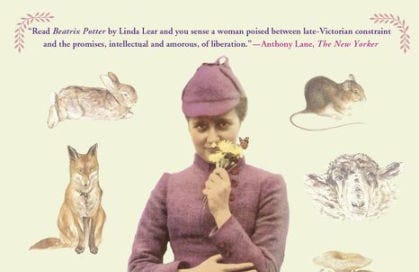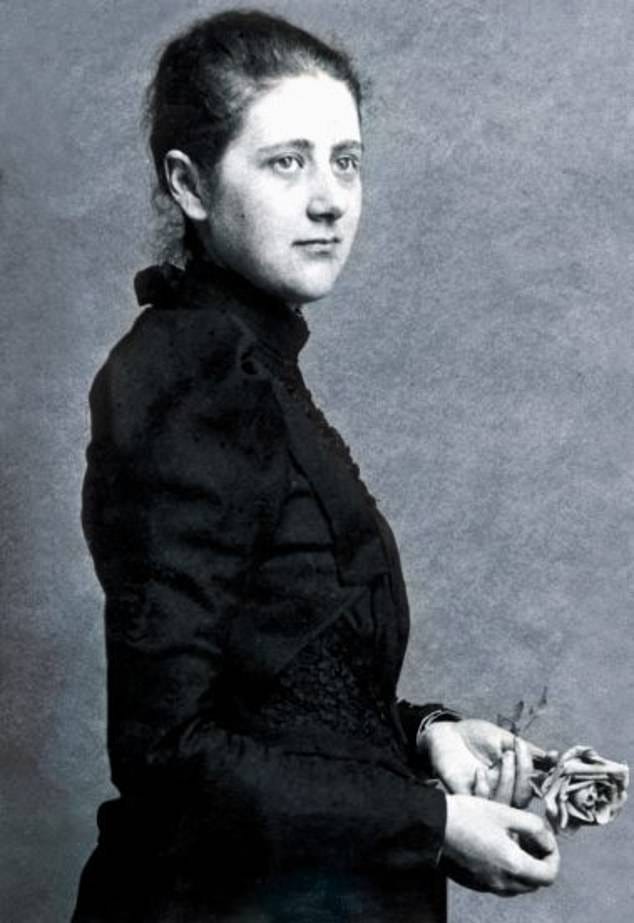Beatrix Potter: Author and Naturalist, Part I
A Remarkable Woman, Writer, and Nature Enthusiast
Beatrix Potter. If you do not recognize her name, you’ve probably heard the name of her most famous character, Peter Rabbit.
He is one of the first protagonists to capture young readers' imaginations. I was one of them, sitting on Grandma’s lap as she read the book aloud to me. I delighted in hearing about Peter’s antics in the garden with cranky Mr. McGregor. That book is a relic to me; I’ve held on to that copy, for it is so colored with personal memories. The illustrations in The Tale of Peter Rabbit were drawn by Beatrix herself.
She was a prolific artist. As a storyteller, she possessed a bright and vivid imagination. Three years ago, I wrote a blog post sharing facts about this fascinating woman. Like most authors, she’s become obscured by the stories she told and characters she created.
Having read further about the life lived by this headstrong woman, I was delighted to discover that her passion was not limited to art for art’s sake. Linda Lear’s book Beatrix Potter: A Life in Nature has helped me to see her in a new light. I admire Beatrix even more than I did before.
Helen Beatrix Potter was born to wealthy parents Rupert and Helen on July 28, 1866 at West Brompton, London, England. Her family on both sides were practicing Unitarians. This meant that her social life was limited, in spite of her parents’ comfortable lifestyle and position in Society. This led to an absence of close friendships, driving her to form bonds with animals in the garden.
She and her younger brother, Bertram, amassed an impressive collection of critters inside of the house itself, from butterflies to bats, many of which would serve as inspiration for her stories. As a child, Beatrix also found diversion in her father’s collection of books. It fed her young imagination such that, later in life, she was able to write and paint scenes that engrossed audiences of all ages.
When it became obvious to Rupert Potter that his daughter was gifted in the arts, he was incredibly supportive. Himself also a devotee of the arts, he was happy to hire tutors to refine her talent. Beatrix’s early years saw her working with at least three art tutors. While she benefited from the lessons, she was a free spirit. Diary entries written at the time reveal that she did not like being told how to draw her pictures. Once finished with her third and final instructor, she was glad to explore her own style.
By that time, she was skilled enough to go into the world and sketch to her heart’s delight, developing a palette of her own. She explored the gardens of her family’s various estates, as well as the forests surrounding them. This is where her interest in drawing nature began: the common flower in the back-yard.
Soon her interests shifted from depicting plants to learning about them. Beatrix Potter wanted to know what the plant was called, what it was used for, and where to find it.
Thus began the scientific journey of the future author of Peter Rabbit. Her childhood saw her as a lonely girl seeking comfort in art. By the time she became a young lady of fifteen, Beatrix had developed an interest in matters not proper for females. She gathered fungi in the forest, scouring her father’s books in the hopes of learning their Latin names. She placed them under Bertram’s microscope, drawing them to the minute detail. Unfortunately, few of these illustrations survive.
Any serious interest in the sciences would not do for a well-bred lady. Regardless, Beatrix would not renounce her passion. She would stop at nothing in her attempts to break free from the restraints of society. She did so in a quest for answers to her inquiries: What is this plant? What does it do? How does it reproduce?
Finding insufficient information about fungi in her father's books, she began what would be a long journey into a male-dominated field. Imagine such determination at the young age of fifteen!
Beatrix went to various universities and conservatories on her own. She went in search of professors who could tell her about the plants that had gripped her curiosity. It was the beginning of a long, frustrating struggle against Society. She was constantly told by her mother that she was doing severe damage to her name and that of the family.
As we will see in part two of this essay, which I will publish next week, Beatrix proved to be a fighter, insistent in acquiring the information she desired.
The Tale of Peter Rabbit had not been born yet when Beatrix walked to one of the exclusive scientists' hubs, Kew Gardens. I picture her holding a parasol, sketchbook gripped under her arm. She was likely wearing a pair of gloves—for what lady would be seen without them? Beatrix was always sensibly stylish. Her head, I imagine, was held up high as she braced herself to knock at each and every door until one of them opened.
Beatrix wanted to know these things—needed to know—and it is a good thing that she sought this knowledge persistently. She would one day become a pioneer in the natural sciences, a woman to be admired for many reasons other than her storytelling.
If you haven’t been convinced yet to read The Tale of Peter Rabbit, I suggest you do so. It is more than just a children's book. You learn about an author through the stories they tell.
Was Peter Rabbit one of the first books you read as a child? Did you know about Beatrix Potter’s unusual interest in science? If you could ask her one question, what would it be?







Have you been to the Potter’s summer home in the Lake District? The garden that inspired her to write the Peter Rabbit stories was beneath her window. Lingholm (near Keswick) is lush, green, and inviting to fertile imaginations such as Beatrix showed from an early age.